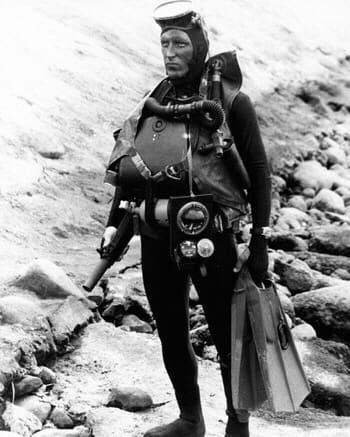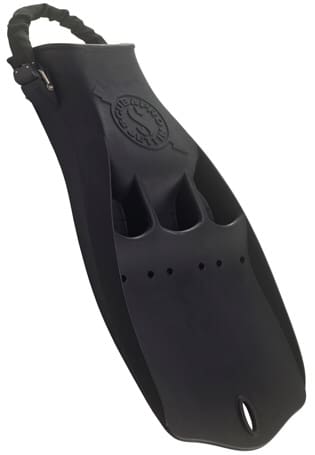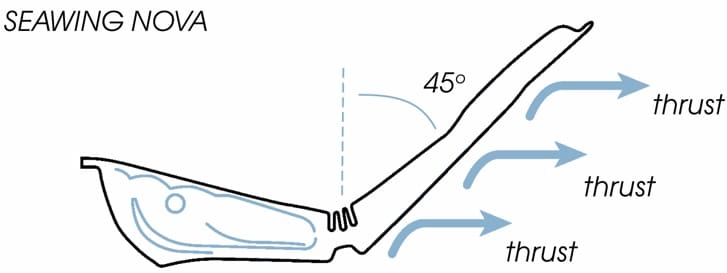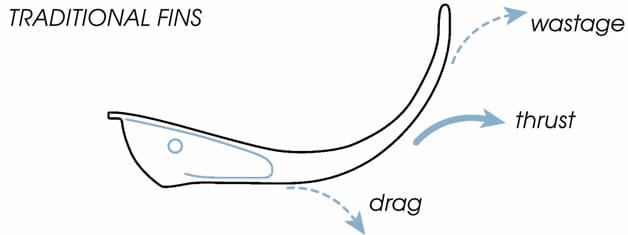While the concept of fins is simple, the designs and options available are numerous. When evaluating which fins will best meet your needs, keep the following questions in mind:
• What do I plan on using the fins for PT/ Surface swimming, diving, Over the Beach (OTB)or river and stream crossing, will you be carrying them while patrolling?
• What water temperature range will you be using them in (so what size boot pocket will you need)
• What type of kick will you use, and in what environment, IE getting in and out of an SDV or closed in areas like around piers or caves?

When the military first started diving, there was only basically one type of fin;(the duck fin) now there is a fin for almost every type of dive/swim. Fins are a specific piece of kit, almost to the point that you can have more than one set of fins depending on what you are going to do. Your fins are one of the only pieces of equipment that significantly affect how well you perform during your time in the water.
Surface Fins
Typically, a more basic fin design will meet your needs. The length of the fin needed by surface swimmers is typically shorter than those needed by SCUBA divers and are they are shorter than those used by free divers. If you feel like you are fighting your fins rather than being aided by them, then your fins are probably more significant than you need. Meaning they are too big for you. Full foot fin are usually the best for this as long as the water is warm, or you can buy a set a little bigger and use a dive sock.
Combat Swimming
Military divers tend to desire more fin features than recreational divers. They probably use a fin that has more in common with a technical / cave diver. There are two types of divers that are more aware of the propulsion power offered by their fins. SCUBA fins tend to be the same length or slightly longer than snorkeling and swimming fins, which means they require more leg strength and power to kick effectively.

Foot Pocket Open or Closed
Water temperature will affect the gear you choose. The gear you wear can be a factor in determining the fins you take into the water with you. If you are in cold water, you will need thinker booties. The good thing about your feet is you can always go with a dive bootie in warmer water. Your feet, for the most part, will not overheat. So, you only have to worry about how cold the water is and if you have to use a thinker boot then usual. If you dive wearing boots (either neoprene or hard sole), an open-foot design fin is what you’ll want to wear. An open foot pocket accommodates boots because the heel strap was around the back of the diver’s boot and can be adjusted to offer a comfortable fit. If you wear rigid-sole boots, the open-foot pocket is the best option.
Closed-foot fins cover your entire foot. You can still wear a dive sock to keep it from rubbing if you are going barefoot, but most people won’t need that.
Propulsion
Technology has help fin’s out over the last 20 years or so. If you are blindly wearing a pair of fins because it was issued and that’s all you have, you really should go to a dive shop and look at some more options. There are shoes today for running, doing CrossFit, or walking. Fins have evolved to be the same way.
Diver fins now offer features like Paddle, Channel and Split fin designs.


Channel and Paddle
Channels help move the water across or through the fin, which allows the diver to move through the water quite rapidly. Channels increase the speed because they offer less surface area resistance in the water. The channels also offer extra flexibility, which means the fin can bend further and move more water with each kick. Modified paddle fins offer a more flexible material that is used for connecting the blade to foot pocket, cutaways in the upper portions of their blades, and soft center panels. They tend to be more flexible than traditional paddles, making them easier on the legs and ankles. The best paddles can compete head-to-head in comfort and performance with the best splits fins. It can also help on long dives with leg cramps and sore knees and angles.
The theory behind split fins is as the diver kicks their foot downward when engaged in an up-tempo flutter kick, actually generate lift along with a jet-propulsion effect, similar to a boat’s propeller. The faster the propeller turns, the more propulsion is generated. With split fins, power comes from the speed of a diver’s kick rather than the force of the kick. Split fins are also popular among divers who experience knee pain or have had knee surgery. The split fin reduces the amount of resistance felt by the diver’s joints while offering a great deal of effectiveness with each kick.
There are so many fins out there today that do some many things. It is tough to use one set of fins everything. I would also say there is no point to ask one set of fins to do anything. You can you a small set of fins for water jumps or river and stream crossing/ OBT and then when you are swimming on a long dive you can use a different pair of fins. Fins are like shoes, you have more than one pair of boots, and you can genuinely have at least two to three sets of fins that can do it all.
Lastly since is basically Independence Day weekend on July 6, 1747. John Paul Jones is born in Arbigland, Scotland. He is originally appointed to the Continental Navy in 1775, he is known for his quote,” I’ve not yet begun to fight!” during the battle between the Continental frigate, Bonhomme Richard, and HMS Serapis on Sept. 23, 1779.


Good post. Similar on hardsoles would be useful too.
Actually the firs swim fin used by the UDT in WW II was the Owen Churchill fin.
http://www.divinghistory.org/owen-churchill-fin/
Duckfeet fins were invented by Author Brown and first sold in 1946.
https://swelllinesmag.com/2018/02/13/the-history-of-duck-feet-fins-bodysurfing-bodysurf-diving/